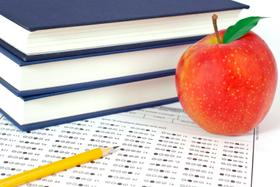Serving 636 students in grades Kindergarten-3, Bessie E. Owens Primary ranks in the bottom 50% of all schools in California for overall test scores (math proficiency is bottom 50%, and reading proficiency is bottom 50%).
The percentage of students achieving proficiency in math is 15-19% (which is lower than the California state average of 33%). The percentage of students achieving proficiency in reading/language arts is 20-24% (which is lower than the California state average of 47%).
The student:teacher ratio of 21:1 is equal to the California state level of 21:1.
Minority enrollment is 95% of the student body (majority Hispanic), which is higher than the California state average of 79% (majority Hispanic).
Quick Stats (2024)
- Grades: Kindergarten-3
- Enrollment: 636 students
- Student:Teacher Ratio: 21:1
- Minority Enrollment: 95%
- Overall Testing Rank: Bottom 50% in CA
- Math Proficiency: 15-19% (Btm 50%)
- Reading Proficiency: 20-24% (Btm 50%)
- Source: National Center for Education Statistics (NCES), CA Dept. of Education
Top Rankings
Bessie E. Owens Primary ranks among the top 20% of public schools in California for:
Category
Attribute
Percent Eligible For Free Lunch
School Overview
Bessie E. Owens Primary's student population of 636 students has stayed relatively flat over five school years.
The teacher population of 31 teachers has declined by 13% over five school years.
Grades Offered
Grades Kindergarten-3
Total Students
636 students

Gender %

Total Classroom Teachers
31 teachers

Students by Grade

School Rankings
Bessie E. Owens Primary ranks within the bottom 50% of all 9,602 schools in California (based off of combined math and reading proficiency testing data).
The diversity score of Bessie E. Owens Primary is 0.32, which is less than the diversity score at state average of 0.63. The school's diversity has stayed relatively flat over five school years.
Overall Testing Rank
#7843 out of 9602 schools
(Bottom 50%)
(Bottom 50%)

Math Test Scores (% Proficient)
15-19%
33%

Reading/Language Arts Test Scores (% Proficient)
20-24%
47%

Student : Teacher Ratio
21:1
21:1

American Indian
1%
1%

Asian
1%
12%

Hispanic
82%
56%

Black
11%
5%

White
5%
21%

Hawaiian
n/a
n/a
Two or more races
n/a
5%

All Ethnic Groups



Eligible for Free Lunch
86%
51%

Eligible for Reduced Lunch
2%
7%

School Statewide Testing
School District Name
Source: National Center for Education Statistics (NCES), CA Dept. of Education
Frequently Asked Questions
What is Bessie E. Owens Primary's ranking?
Bessie E. Owens Primary is ranked #7843 out of 9,602 schools, which ranks it among the bottom 50% of public schools in California.
What percent of students have achieved state testing proficiency in math and reading?
15-19% of students have achieved math proficiency (compared to the 33% CA state average), while 20-24% of students have achieved reading proficiency (compared to the 47% CA state average).
How many students attend Bessie E. Owens Primary?
636 students attend Bessie E. Owens Primary.
What is the racial composition of the student body?
82% of Bessie E. Owens Primary students are Hispanic, 11% of students are Black, 5% of students are White, 1% of students are American Indian, and 1% of students are Asian.
What is the student:teacher ratio of Bessie E. Owens Primary?
Bessie E. Owens Primary has a student ration of 21:1, which is equal to the California state average of 21:1.
What grades does Bessie E. Owens Primary offer ?
Bessie E. Owens Primary offers enrollment in grades Kindergarten-3
What school district is Bessie E. Owens Primary part of?
Bessie E. Owens Primary is part of Bakersfield City School District.
In what neighborhood is Bessie E. Owens Primary located?
Bessie E. Owens Primary is located in the Lakeview neighborhood of Bakersfield, CA. There are 1 other public schools located in Lakeview.
School Reviews
Review Bessie E. Owens Primary. Reviews should be a few sentences in length. Please include any comments on:
- Quality of academic programs, teachers, and facilities
- Availability of music, art, sports and other extracurricular activities
Recent Articles

Should Teacher Salaries be Public Information?
Public school teachers are considered public servants – but does that make their salary details public information? Learn about the heated debate surrounding whether teacher salaries should be made public.

The Link Between Education and Incarceration: The NAACP Report
Education and the rate of incarceration have been linked in a recent NAACP report. Learn about the report and the troubling findings.

Bussing: North Carolina's New Student Assignment Plan
We analyze a new plan for student assignment in two North Carolina school districts and the public reaction to the idea of bussing students – as well as alternatives that have been proposed by education experts.





